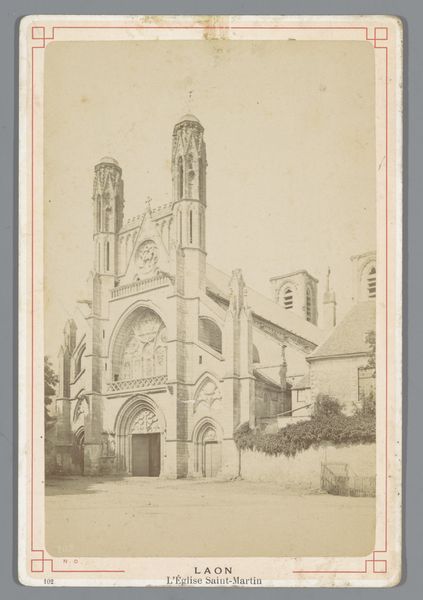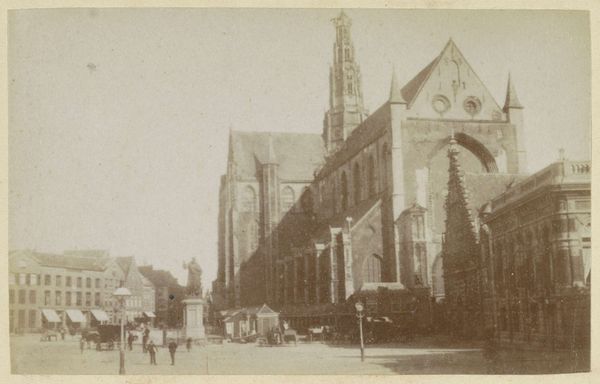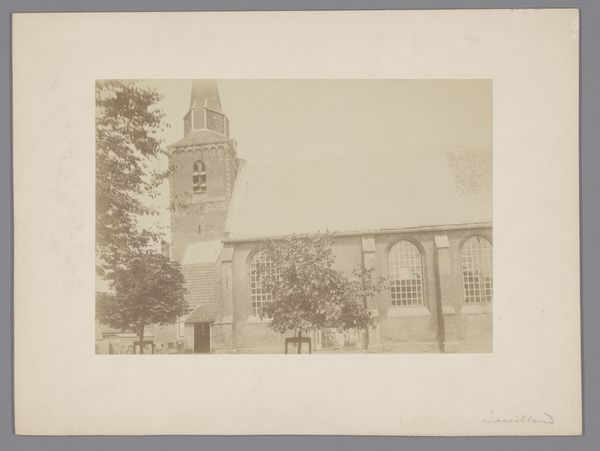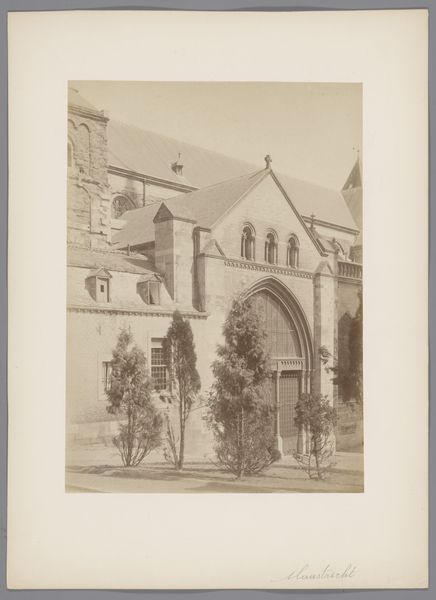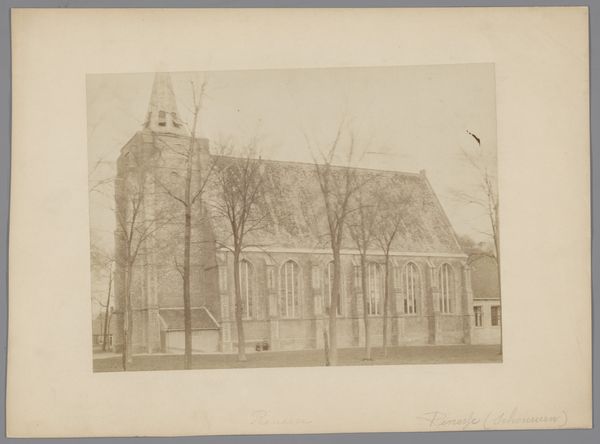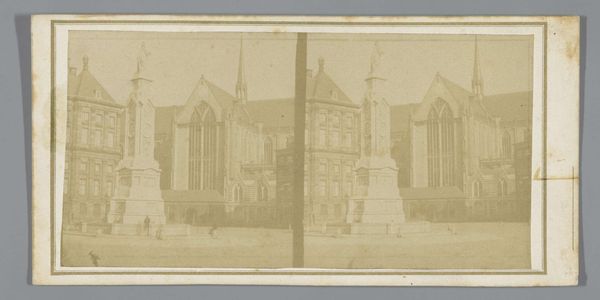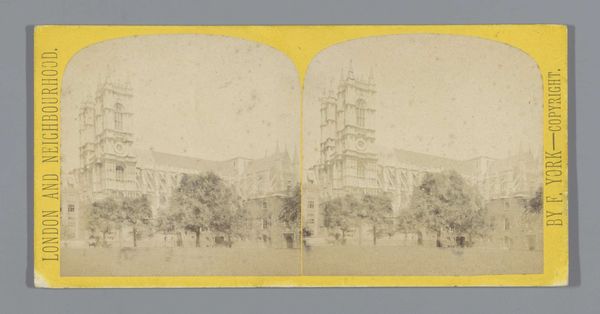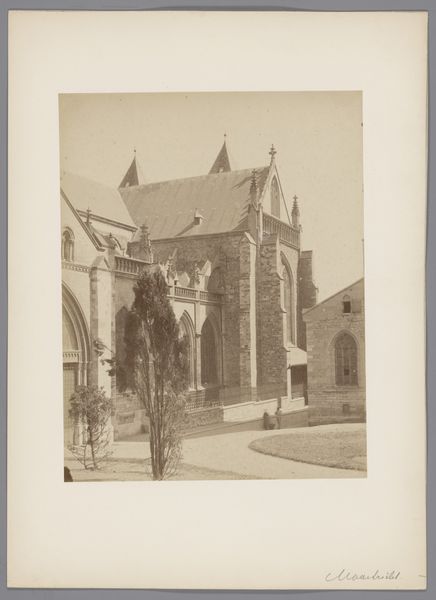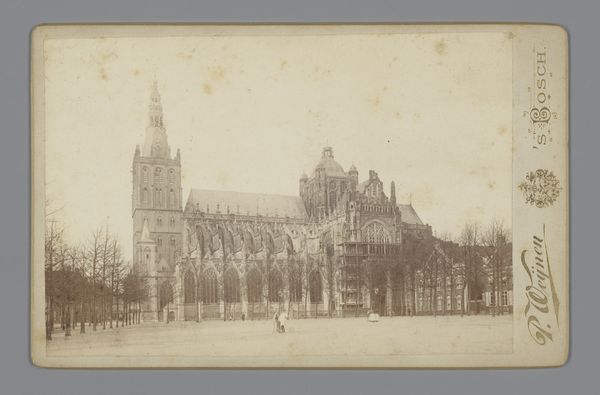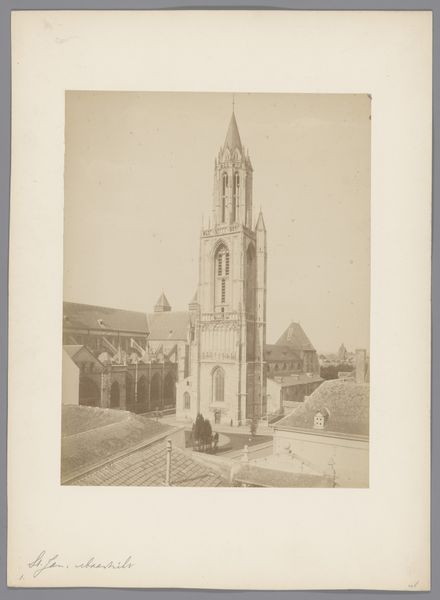
print, photography, architecture
# print
#
photography
#
cityscape
#
architecture
#
realism
Dimensions: height 86 mm, width 174 mm
Copyright: Rijks Museum: Open Domain
Editor: Here we have an architectural study titled "Gezicht op de Église Saint-Germain-l'Auxerrois in Parijs", a photographic print made sometime between 1850 and 1880 by Vibien Golvin. What strikes me is the way the muted sepia tones create a feeling of timelessness despite the relatively modern medium. How would you interpret this work? Curator: This image speaks volumes about the socio-political climate of the time and the evolving role of photography. The decision to capture the Église Saint-Germain-l'Auxerrois, which stands directly opposite the Louvre, isn't accidental. Consider that this church had strong ties to the French monarchy. Its prominent placement underscores the church's continuing importance in a rapidly changing society and, possibly, serves as a quiet form of resistance to the secularizing tendencies that would transform France and especially Paris. What impact do you think the architectural details of the image had on viewers during its time? Editor: It's fascinating that you bring up its historical connections. The intricate details, amplified by the sharp focus, would likely convey a sense of permanence and authority in an age undergoing intense modernization and revolution. How was photography influencing perceptions of architectural spaces, say, as compared to painting at the time? Curator: Exactly! The relatively new medium of photography, as opposed to painting, purported to offer an objective truth. It provided a seemingly unmediated glimpse of the Église Saint-Germain-l'Auxerrois that aligned with the rising social and political demand for truth in media. The architecture then becomes almost evidence, bolstering the church's enduring role in society through its visually documented presence. Perhaps Vibien Golvin sought not just to document a building, but to comment on its enduring role in shaping French identity through a period of drastic transformation. Editor: That provides such interesting historical context! I now see how the photograph exists beyond just a picture of a building; it makes a subtle, but distinct political statement. Curator: Indeed, art can offer such nuanced historical perspectives. Examining photography from this period offers insights into how institutions negotiate rapid social shifts in France.
Comments
No comments
Be the first to comment and join the conversation on the ultimate creative platform.

